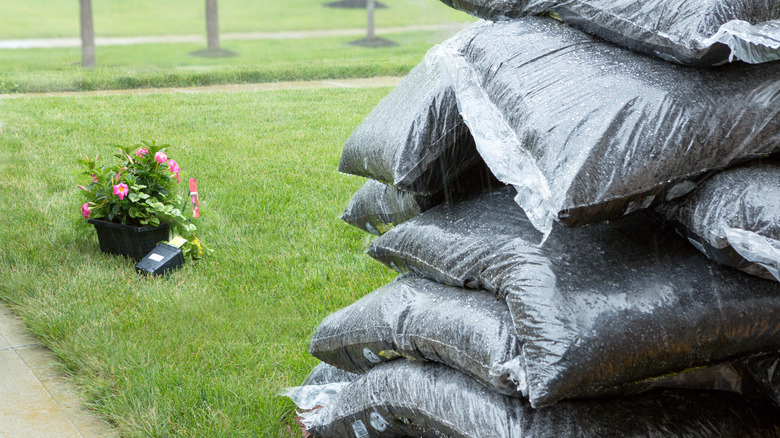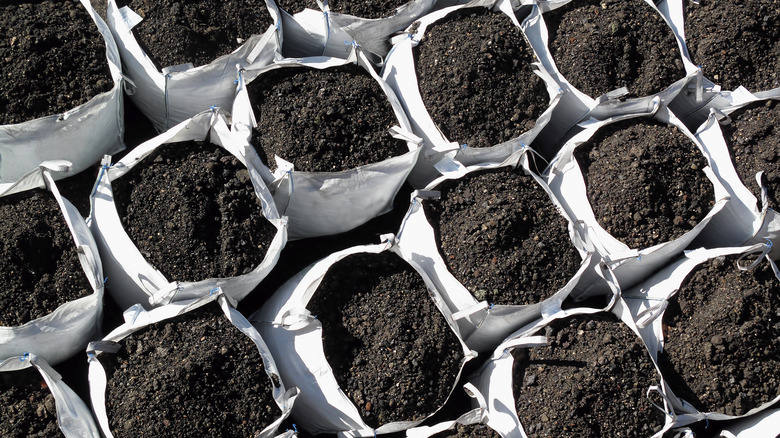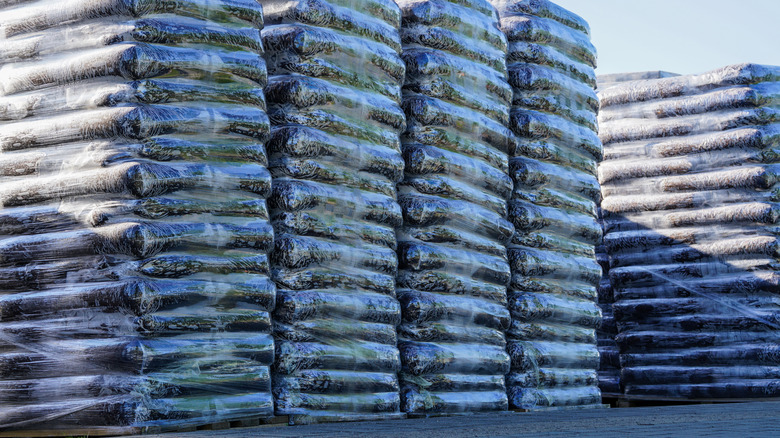Try Soil Bag Planting For A Quick And Easy No-Dig Vegetable Garden
Are you looking to break into gardening, but find yourself intimidated by the physical demand or the high cost of tools? Well, this particular method of gardening may be perfect for disabled or elderly gardeners, newbies, and those simply lacking ample yard space, as it doesn't even require digging a hole in the ground. Soil bag planting has evolved into a fun alternative to growing various crops, as gardeners look for creative ways to make the activity possible across a variety of living accommodations.
Gardening with bags is far from a foreign concept. Traditional fabric grow bags allow gardeners to transport elements of a full-size garden to any place outdoors, from a deck or patio to a high-rise balcony. But, transforming the bag of potting soil you get from the store into an impromptu container is an innovative technique that makes gardening even more convenient for the consumer. Turning your potting soil bag into a makeshift planter is also a great way to upcycle your purchase, an environmentally friendly alternative to simply tossing the bag into a landfill. Here's more on soil bag planting, including how it works and some ways you can benefit from it.
How soil bag planting works
When it comes to soil bag planting, getting started is easy and requires only a fraction of the time needed to plant crops in the ground. All you need is a bag of soil of your choice, some scissors or a knife, a seedling or seeds, and some mulch. Before you begin cutting, determine how you want to position the soil bag in order to grow your plants. If you plan on harvesting multiple plants from a single bag, laying the bag flat on its back would give you more surface area to space out your crops. After deciding, poke holes in the bag's side that is closest to the ground. This will allow excess water to exit the bag as you irrigate your plants, preventing overwatering. From here, move the bag to a spot outdoors that receives adequate sunlight. Cut a large hole in the bag's top, saving at least an inch around the perimeter of the bag to help hold the soil in place. Finish by planting your seeds or seedlings, applying mulch, and watering.
Some crops fare better in bags than others. For example, root vegetables and annual flowers grow well since bags prevent root circling and help the plants' soil aerate. More specifically, lettuce, peppers, green onions, and potatoes grow nicely inside soil bags. Herbs that perform well include basil, rosemary, thyme, and parsley.
Benefits of soil bag planting
Soil bag planting is beneficial for beginner gardeners because it creates the opportunity to gain basic experience without needing to overexert physically or financially. This planting method is cheap for gardeners on a budget since repurposing a soil bag prevents you from having to purchase additional gardening supplies, including pots, beds, and sets of tools necessary for in-ground gardening. Soil bag planting also makes caring for plants easier in cases of emergency, especially with smaller varieties. For instance, to keep your plants healthy in the event of an overnight frost, you can place the bag inside a fastenable plastic bin, which will keep the crops safe when left outside in freezing temperatures.
Soil bag planting is also great for aspiring gardeners who don't have the room to sustain a full garden given their living arrangements. If your outdoor space is limited to a tiny plot of land or even an apartment or condo balcony, growing your plants in soil bags allows you to still get in on the fun of maintaining your own miniature garden.


